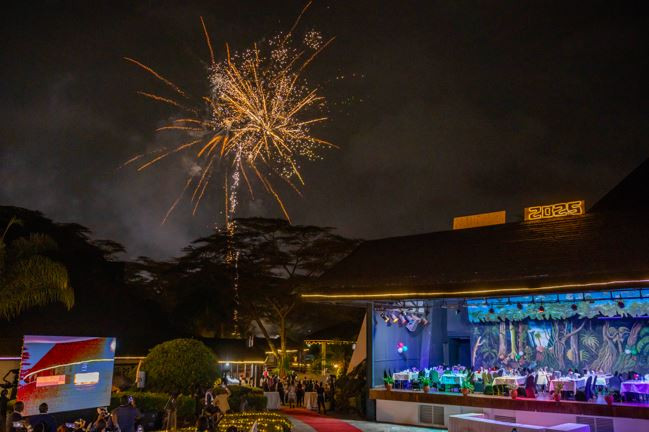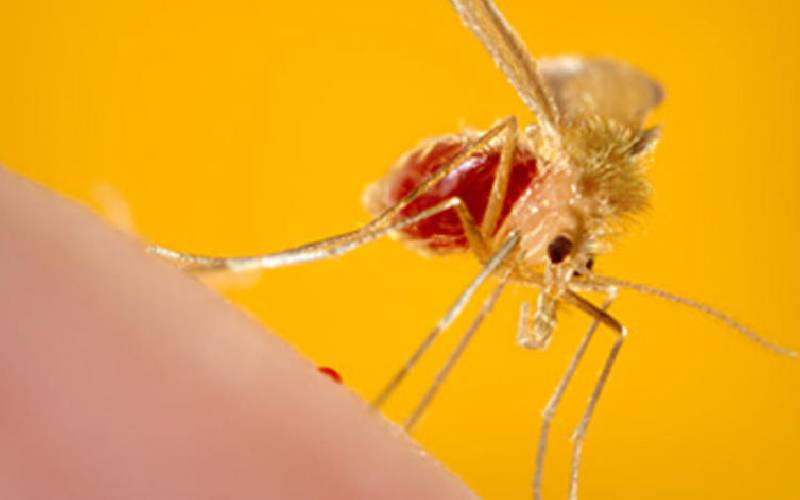
Every fourth Thursday of November, the global community celebrates Thanksgiving Day, which heralds the entry of the Christmas season—that time when families, friends, colleagues, and communities gather together to share the year-round challenges and blessings over food and drink.
What started in the 16th Century as a harvest festival where European settlers known as the Pilgrims would have a feast to celebrate a bountiful harvest, has transformed into a holiday celebrated annually, not only in America (the origin), but in Kenya too.
Thanksgiving is celebrated in different ways, the celebrations take place from October through November, with the climax of the celebrations being the fourth Thursday of November.
This year, the highlight of Thanksgiving Day was a show-stopping Dinner hosted by the American Chamber of Commerce (AmCham) at the Emara Ole-Sereni Hotel, Nairobi. The event marked by glamour, gratitude, and entertainment, was a celebration that brought together members, friends, partners, and the Diplomatic Corps for a night to remember.
Other events were hosted at the Giraffe Manor2s Retreat, characterised by food and drinks and a high-profile fashion show by Katrush & Hamji, two Kenyan brands that redefine style with purpose.
During this period, the spirit and intent of thanksgiving have spread across the county, and now counties such as Kisumu, Nakuru, Meru, Mombasa, Eldoret, and many others mark this historical day.
Purity Kananu, an entrepreneur from Meru says that since she learned about Thanksgiving Day while in high school, she has made it a family tradition to observe the holiday every year.
“Thanksgiving is a day where families and friends, colleagues and event communities come together to celebrate life and all great things achieved as well as sharing challenges for a better future,” says Kananu. She does not, however, know the origins of the tradition.
- Slaying the 'killer in the kitchen'
- Is something bothering you? Tell it to an AI chatbot therapist
- Kenya and China eye deeper collaborations in traditional medicine
- Fohow; Chinese traditional medicine marks a year in the Kenyan market
Keep Reading
Grace Kabare, who has worked with the American Embassy and UN for more than twenty years, says she become an earnest follower of this important day in the American calendar, since embracing it during her first year at the Embassy.
“The Americans hold this day in high esteem and over the years, it became part of the tradition in my household too, even while away from the office, and I celebrate the day as I remember the goodness of God in my life,” says Kabare.
The ex-UN employee says that the day too has become a time of reflection, “on how far I and my loved ones have come, the lows and downs, the achievements and the obstacles encountered – keeping focus on all things positive,” she says.
Raymond Otieno (Otis), a Physician, has a flip side of the great American day that has found new meaning among his social networks. He says the day has gained tremendous popularity in families, religious circles (Christians), and social media, with entrepreneurs and businesses taking advantage of the season.
“It is said that something is a fluke the first time, a coincidence the second time but if it happens a third time, it then becomes a tradition, and that is how I found myself cherishing and celebrating Thanksgiving Day for the last nine years,” says Otis.
To Otis and his circle of network, Thanksgiving Day is a special holiday, and each year they plan on how to celebrate it, either as a special family get-together event, an outing “or simply gate-crash on one of the events marking the tradition during October and November,” says the Physician.
He says they started the tradition with his friends while living in Texas, US and they carried it on when they moved back to the country.
How the traditional Thanksgiving feast has evolved over centuries
Historians say the first Thanksgiving may have happened in 1621 when the American Mayflower pilgrims (from England) founded Plymouth Colony in Massachusetts for a three-day meal with the people of Wampanoag for a routine English harvest celebration.
Later, this event was portrayed as a symbol of peace, but years later, according to nationalgeogrphic.com, the word ‘thanksgiving was first used by Alexander Young, a publisher who included a letter by Edward Winslow, a pilgrim that described the historical three-day meal as a period of prayerful fasting.
However, when Young published the letter, he referred the prayerful fasting as “the first Thanksgiving” in a footnote, and the word stuck.
Research indicates that over the years “thanksgiving” has changed meaning from the time it was first used in a religious connotation of celebrating the end of a two-month drought in 1621.
At another time the word was used to celebrate military victories by the pilgrim over Native Americans. At the time, thanksgiving days were declared by the governors or the priests. When George Washington became President, he declared the first national day of Thanksgiving in 1789.
Later, other presidents would ignore the day, until President Abraham Lincoln, through the influence of the Editor of Godey’s Lady Book, magazine brought Thanksgiving Day back to the American calendar. The day was celebrated on the last Thursday of November. However, the day was not celebrated in the Southern states.
The story has it that when President Franklin Roosevelt took over in 1939, he tried to move the day up a week in hopes of allowing more time for Christmas shopping and stimulating the post-Depression economy in vain.
Finally, in 1941, the US Congress passed a joint resolution that established that the last Thursday in November was Thanksgiving Day.
This has remained status quo with the celebrations of Thanksgiving Day spreading across the globe with diverse days of celebration, but the highlight remaining is the last Thursday of November.
How turkey took the centre stage
When celebrants commemorate Thanksgiving, many families use the turkey (cock or hen, duck, geese) depending on the number of people) as the centre piece.
The tradition has been inherited from the first Thanksgiving feast that had a menu of corn, shellfish, cornmeal, beans, nuts, dried berries, pumpkin, and, yes, turkey.
The story behind this is that the pilgrims and Native Americans hunted and served wildfowl like geese, duck, or turkey because the native birds were relatively easy to capture, so they quickly became an important source of food for early American settlers.
The birds are common in Kenya, though they are not a daily delicacy to be served. Tradition has it that, they were only common during festivities and great feasts, and this has easily made them fit with the main recipe in the Thanksgiving Day dinner.
Today, for Kenyans like Kabari, Otis, and Kananu, Thanksgiving Day has become an excuse to gather with family, friends, and colleagues and feast as a precursor to the Christmas, Boxing Day, and New Year holidays.
 The Standard Group Plc is a multi-media organization with investments in media platforms spanning newspaper print
operations, television, radio broadcasting, digital and online services. The Standard Group is recognized as a
leading multi-media house in Kenya with a key influence in matters of national and international interest.
The Standard Group Plc is a multi-media organization with investments in media platforms spanning newspaper print
operations, television, radio broadcasting, digital and online services. The Standard Group is recognized as a
leading multi-media house in Kenya with a key influence in matters of national and international interest.











